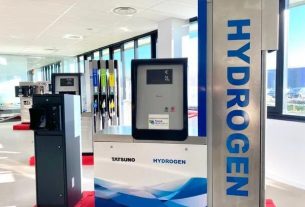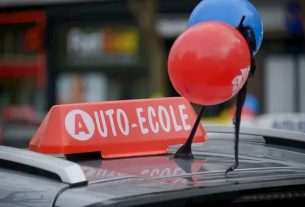The new Audi RS Q8 is the most powerful model in the quattro range on sale in early 2020. 600 horsepower for a price of € 154,900. And 277 g / km of CO2 for a penalty of € 20,000.
The Audi RS Q8 combines the power of an RS model, the look of a high-end coupe and the practicality of an SUV. The datasheet of the new Audi RS Q8 does not stop at its performance but it sets the scene for a machine that no longer has its place in our landscape, if not a few bits of Bundesautobahnen (translate: from German motorways) …
600 hp, 800 Nm of torque between 2,200 and 4,500 rpm: the 4-litre direct-injection turbo V8 petrol engine has impressive performance! It makes it possible to achieve 0 to 100 km / h in just 3”8 and to reach 200 km/h in 13”7.
The maximum speed of the vehicle, electronically limited, is 250 km/h, or 305 km/h with the optional “RS” dynamic pack. The CO2 emissions of 277 g/ km just make you smile, but not everyone.
Mild hybridization
However, the Audi RS Q8 is doing its utmost to reduce its consumption, especially in the city, with its light hybrid system. During deceleration and braking, an alternator-starter recovers up to 12 kW of energy and stores it in a lithium-ion battery. If the driver removes his foot from the accelerator at a speed between 55 and 160 km / h, the RS Q8 recovers energy or coasts for another 40 seconds after the engine is switched off.
The alternator-starter starts the engine in a fraction of a second when the accelerator is pressed. This technology enables the start-stop function to be operated up to 22 km / h.
When stopped, the engine will restart when a camera detects that the vehicle in front of the RS Q8 begins to move, even if the driver’s foot is still depressing the brake pedal. The on-demand cylinder system, for its part, reduces consumption on the road.
All-wheel drive: maximum safety

The permanent quattro all-wheel drive system transfers power from the 8-speed tiptronic transmission. The self-locking differential distributes the torque between the front and rear axles in a ratio of 40/60. If a wheel slips, more torque is automatically sent to the axle which provides the best grip. In the extreme, 70% of the torque can be directed towards the front wheels and 85% towards the rear wheels.
Selective torque control on each wheel completes the handling of the RS Q8. In dynamic turns, the differential distributes the torque between the rear wheels as required. The active differential then guarantees optimum traction, stability and dynamics.
A very sophisticated suspension

The adaptive sport air suspension, with controlled damping, allows the RS Q8 to be as much in place on the track as in all-terrain, and the height of the car can be adjusted up to 90 mm depending on the driving situation. An electromechanical roll stabilizer reduces roll in fast corners.
An electric motor is installed on both axles and in the centre of the two halves of the stabilizer bar. When the car is travelling in a straight line, the two halves of this stabilizer bar are decoupled, which reduces body movement on uneven roads. When cornering, however, the focus is on optimal roll compensation. The two halves of the stabilizer bar are oriented in opposite directions, which significantly reduces the vehicle’s tilt when cornering.




